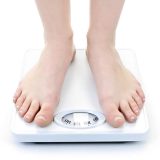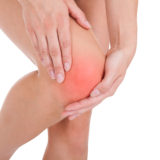For a majority of Americans, losing weight is regarded as the premiere solution to their health problems. Because it reduces the amount of stress on the body’s joints, shedding any extra pounds is beneficial for arthritis sufferers. Although there are many different types of arthritis, gout stands out as one of the most painful types – with great relief coming from reducing joint stress and getting trim in those who are overweight.
Being overweight seems to be the Achilles heel of our hi-tech, modernized society – and orders to drop those extra pounds are heard at a majority of doctor visits. Unfortunately, the repetitive nature of this advice has the unintended effect of dulling its urgency. Nonetheless, individuals suffering from gout are among those who should take the suggestion to lose excess weight very seriously.
About Gout
A notoriously painful condition, gout has long been associated with dietary overindulgence in meat, seafood and alcohol. As such, dietary restrictions are typically a first line of defense for managing this problem.
Gout is a type of inflammatory arthritis caused by deposits of uric acid in and around joints – especially in the feet. Some facts relating to gout include:
- A natural byproduct of protein digestion, uric acid is usually removed from the blood by the kidneys.
- Uric acid is a waste product from the metabolism of purines.
- Foods high in purines include red meat, organ meats, fish, foul, lentils, alcohol, mushrooms, peas, asparagus and spinach.
- If the kidneys can’t remove uric acid from the blood (either because they are impaired or there is too much uric acid), hyperuricemia will develop.
- Hyperuricemia (elevated levels of uric acid) is the biggest risk factor for gout.
A gouty attack occurs when high levels of uric acid in the blood cause crystals to form and accumulate around a joint. The foot is the main target of gout because gravity and the foot’s lower temperature aid uric acid crystallization.
An attack of gouty arthritis can be debilitating. Every step feels like walking on broken glass. The affected joint is usually hot, red, shiny and extremely painful. Experts estimate that anywhere from one to six million Americans contend with this painful problem.
Gout and Weight Loss
Being overweight increases the risk of developing hyperuricemia and gout because there is more tissue available for turnover or breakdown, which leads to excess uric acid production. As published in a 2005 edition of the journal Archives of Internal Medicine, U.S. researchers examined the relationship between obesity, weight change and gout.
After evaluating over 47,000 participants over a twelve-year period, the investigators concluded that higher fat content and weight gain are strong risk factors for gout in men, while weight loss is protective.
A gout diet helps to control the production and elimination of uric acid, which may help prevent gout attacks or reduce their severity. A gout diet isn’t intended as a treatment, but may help control attacks. In addition, because obesity is a risk factor for gout, losing weight can help lower a person’s risk of gouty attacks.
A gout diet has two basic components; losing weight if overweight or obese and limiting consumption of foods that are high in purines. Seven important components of a gout diet include:
- Fasting or rapid weight loss is not recommended for those with gout because this approach can actually promote a gout attack.
- Drink plenty of fluids to help flush uric acid from the body.
- Avoid high-protein diets, which are known to encourage hyperuricemia.
- Avoid or severely limit high-purine foods such as organ meats, herring, anchovies, mackerel, beef, pork, lamb, fatty fish and seafood.
- Abstain from alcohol since it interferes with the elimination of uric acid from the body. Beer in particular has been linked to gout attacks.
- Increase consumption of plant-based proteins. Besides changing protein reliance from high-purine foods to low-purine foods, consuming beans and legumes contributes to a reduction of saturated fat, a major contributor to being overweight.
- Follow other tenements of a healthful weight management program such as eating low-fat or fat-free dairy products, choosing complex carbohydrates (whole grains, fruit and vegetables) over refined carbohydrates (white bread, cake and pasta) and limiting sugar consumption.
Anyone who has ever had an attack of gout can attest to it being one of the most painful things he or she has endured. As such, gout prevention is one of the most important aspects of living with this arthritic condition. By heeding the seven gout dietary tips listed above, those who are most vulnerable have an advantage in preventing the painful development of uric acid crystallization.




